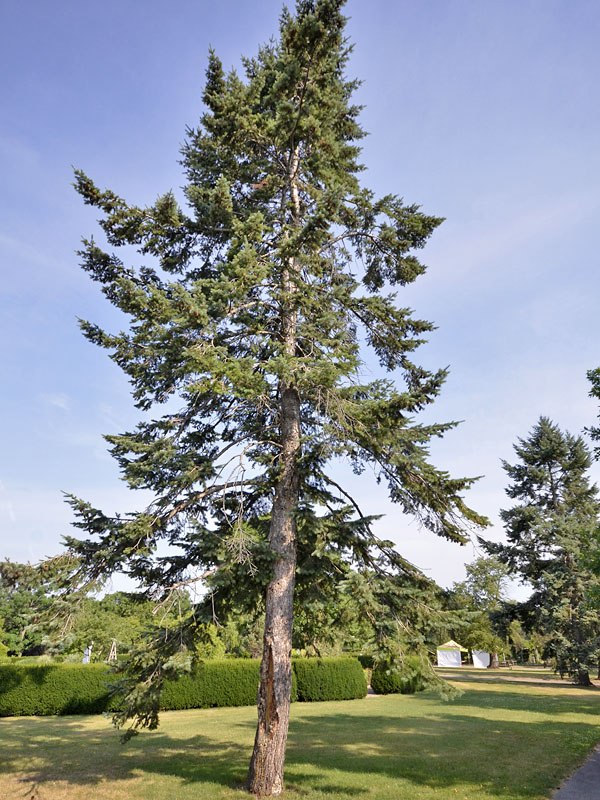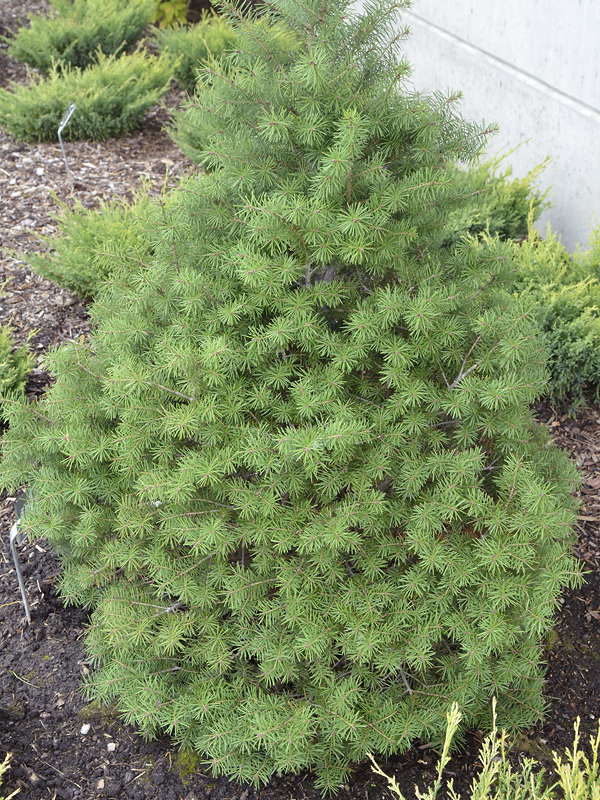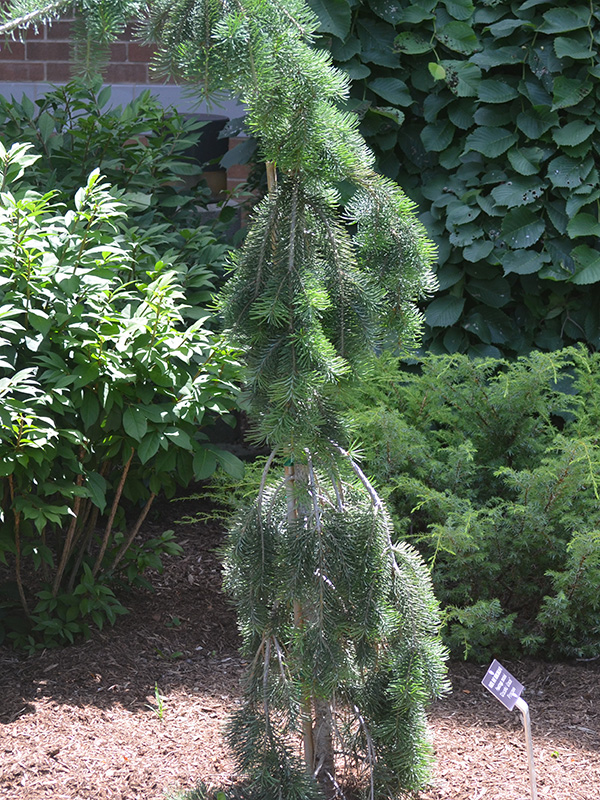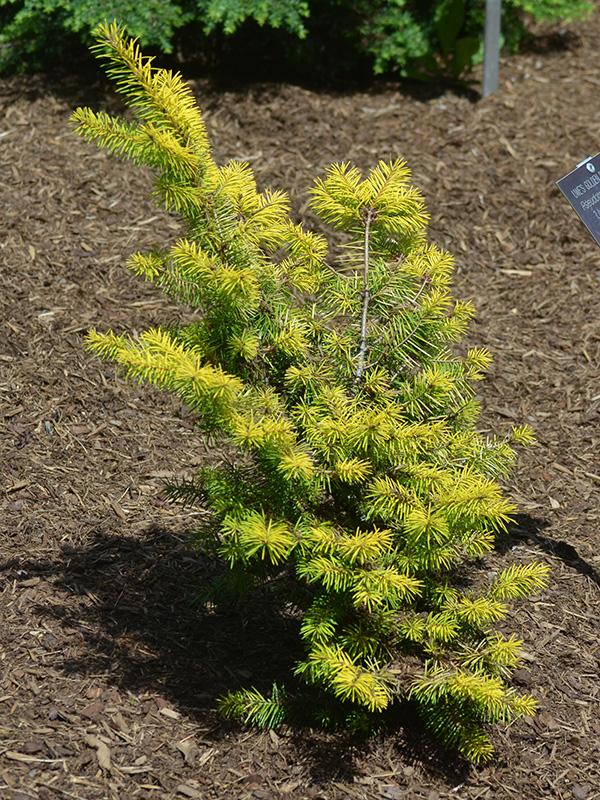| ID Characteristic | Roughly pyramidal in shape, crimson flowers and smooth bark at a young age, light brown and reddish ridged bark in later years. Cones that are up to 10 cm long with bracts that extend beyond scales. |
| Shape | Pyramidal growth habit at a young age later developing into an irregular crown. |
| Landscape | An attractive native forest tree, Pseudotsuga menziesii adds a natural, soft feeling to a landscape. Suitable for massing but does not perform well as windbreaks or understory plantings and has limited pollution tolerance. |
| Propagation | Easily propagated through seeding, requiring little or no pre-treatment depending on source. Intense stress is put on plant if propagated by cutting. High success of transplanting when tree is 10 years old or less. |
| Cultivation | Prefers full sun and neutral or slightly acid, moist, well drained soils. |
| Pests | Susceptible to Douglas Fir bark beetle, scales, aphids, pine butterfly, spruce budworm, multiple species of canker causing fungi as well as needle and leaf and twig blight. |
| Notable Specimens | “The Red Creek Fir Giant” located in Port Renfrew on the southern tip of Vancouver Island, British Columbia, Canada is the world’s largest Pseudotsuga menziesii specimen at a height of 74 m. |
| Habitat | Rocky Mountains and Pacific Coast from British Columbia to Mexico. |
| Bark/Stem Description | Trunk is smooth at a young age developing thick reddish brown ridges as the tree matures, the bark can be up to 10 - 15 cm thick and deeply fissured on old trees. |
| Flower/Leaf Bud Description | 5-75 mm long, dark brown, ovoid-conical, apex pointed with resinous bases. |
| Leaf Description | 2.5-3.5 mm long pectinate shape in v-shaped arrangements. Colour varies from bright, blue, yellow or faded green shades depending on the seed source and variety. |
| Flower Description | Monoecious, crimson coloured three pointed bracts. Male flowers are axillary and pendulous while females are terminal. Blooms January to March. |
| Fruit Description | 7.5-10 cm long by 3.5-5 cm wide pendulous cones with oval-ovoid three-pronged bracts protruding from cone scales. The seeds are broadly winged. |
| Colour Description | Greyish brown bark turning red with age. Branchlets are light brown or grey with varying shades of green leaves. Chestnut brown buds and crimson flowers. |
| Texture Description | Medium. |



